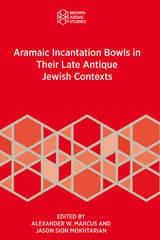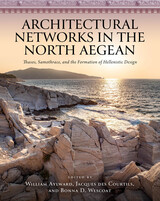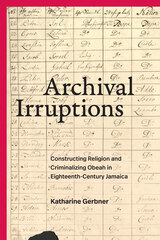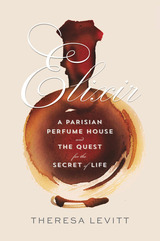
A Financial Times and Scientific American Best Book of the Year.
A story of alchemy in Bohemian Paris, where two scientific outcasts discovered a fundamental distinction between natural and synthetic chemicals that inaugurated an enduring scientific mystery.
For centuries, scientists believed that living matter possessed a special quality—a spirit or essence—that differentiated it from nonliving matter. But by the nineteenth century, the scientific consensus was that the building blocks of one were identical to the building blocks of the other. Elixir tells the story of two young chemists who were not convinced, and how their work rewrote the boundary between life and nonlife.
In the 1830s, Édouard Laugier and Auguste Laurent were working in Laugier Père et Fils, the oldest perfume house in Paris. By day they prepared the perfumery’s revitalizing elixirs and rejuvenating eaux, drawing on alchemical traditions that equated a plant’s vitality with its aroma. In their spare time they hunted the vital force that promised to reveal the secret to life itself. Their ideas, roundly condemned by established chemists, led to the discovery of structural differences between naturally occurring molecules and their synthetic counterparts, even when the molecules were chemically identical.
Scientists still can’t explain this anomaly, but it may point to critical insights concerning the origins of life on Earth. Rich in sparks and smells, brimming with eccentric characters, experimental daring, and the romance of the Bohemian salon, Elixir is a fascinating cultural and scientific history.
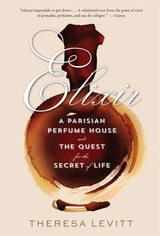
A Financial Times Best History Book of the Year
A Financial Times Summer Reading Favorite
“[V]ividly evokes cultural life in Bohemian Paris, the turbulence of the French Revolution and its aftermath, and the feuds that plagued rival scientists…Levitt’s social history, especially of perfume, is fascinating.” —Wall Street Journal
“A delightful history of science and scent at the dawn of the modern age.” —Financial Times
“Pulling from historical publications and personal writings, Theresa Levitt vividly explains why perfume—bathed in, lathered on, and orally consumed—had a chokehold on Parisian life.” —Scientific American
“[A] fascinating account of the birth pangs of organic chemistry in 19th-century Paris…[Levitt] has caught well these dreaming, competitive, daring men in the act of living, each striving compulsively for the giddy, intoxicating bliss of insight into the making of the world.” —The Times
Until the 1800s, scientists believed that living matter possessed a spirit or essence that differentiated it from nonliving matter. But even as scientific consensus shifted toward the view that all matter shares the same building blocks, some were not convinced.
Elixir tells the story of two dissenters—chemists who redrew the boundary between life and nonlife. In the 1830s, Édouard Laugier and Auguste Laurent worked at Laugier Père et Fils, the oldest perfume house in Paris. By day, they prepared the perfumery’s revitalizing elixirs and rejuvenating eaux. In their spare time, they hunted the vital force underlying life itself. Their ideas, roundly condemned by established chemists, led to the discovery of structural differences between naturally occurring molecules and their synthetic counterparts.
Scientists still can’t explain this anomaly, but it may point to critical insights concerning the origins of life. Rich in sparks and smells, brimming with eccentric characters, experimental audacity, and the romance of the Bohemian salon, Elixir gives a fascinating tour of the alchemical revelations that shaped nineteenth-century Paris—and the modern world.
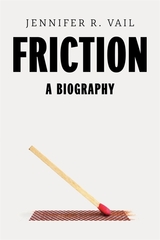
From the first spark of fire to the frontiers of energy, medicine, and space, a pioneering account of the invisible force that connects it all.
Friction, the force that resists motion, is synonymous with difficulty and complication. If you’ve ever replaced tires worn smooth by the road or reached for a can of WD-40 to fix a creaking door hinge, then you know the headache this force can cause.
In this book, Jennifer Vail reveals beneath the difficulty and complication a force as enigmatic and intriguing as it is central to the human story. She traces how, from the moment we first harnessed the power of fire to the Industrial Revolution and beyond, the quest to manipulate friction has driven innovation, culture, and even our own evolution. Today, as scientists study friction in the most unexpected of places, they’re learning why some viruses lie dormant for years while others devastate our cells immediately; where elusive dark matter might be found; and how the climate crisis ought finally be addressed. And yet, for all they’ve learned, scientists still haven’t cracked the greatest mystery of all: how to bridge the distinct laws that govern friction at its largest and smallest scales.
Connecting the discoveries of historical luminaries like Newton, da Vinci, and the Wright brothers to the latest breakthroughs in engineering, Friction is a captivating biography of this unsung hero of the physical world.

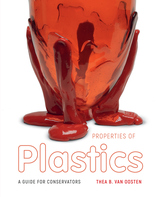
Almost every museum in the world is confronted with plastics in their collections. Research initiatives and knowledge concerning the conservation of heritage objects made of plastics have proliferated over the last twenty-five years, necessitating this up-to-date, comprehensive resource. Intended as a highly practical guide for the conservation community, this authoritative book offers information essential to understanding plastics, polymers, and rubber/elastomers and their behaviors in the cultural heritage context. Numerous graphs, diagrams, and illustrations allow readers to compare the mechanical, physical, thermal, and optical properties of these substances during conservation. Aimed at the hands-on museum practitioner, this book will assist professionals in choosing the appropriate methods and materials for preserving and treating plastic objects.
Complementing the main chapters, fifty-six illustrated “fact sheets” summarize, at a glance, the properties of those plastics most commonly found in museum collections. Six informative case studies present real-world examples of current conservation approaches to works of art and design made of plastics and rubber/elastomers. Under the expert authorship of Thea B. van Oosten, conservation scientist, educator, and internationally regarded authority on the behavior and properties of plastics, this instructive volume is destined to become an invaluable resource for the field.
READERS
Browse our collection.
PUBLISHERS
See BiblioVault's publisher services.
STUDENT SERVICES
Files for college accessibility offices.
UChicago Accessibility Resources
home | accessibility | search | about | contact us
BiblioVault ® 2001 - 2025
The University of Chicago Press


